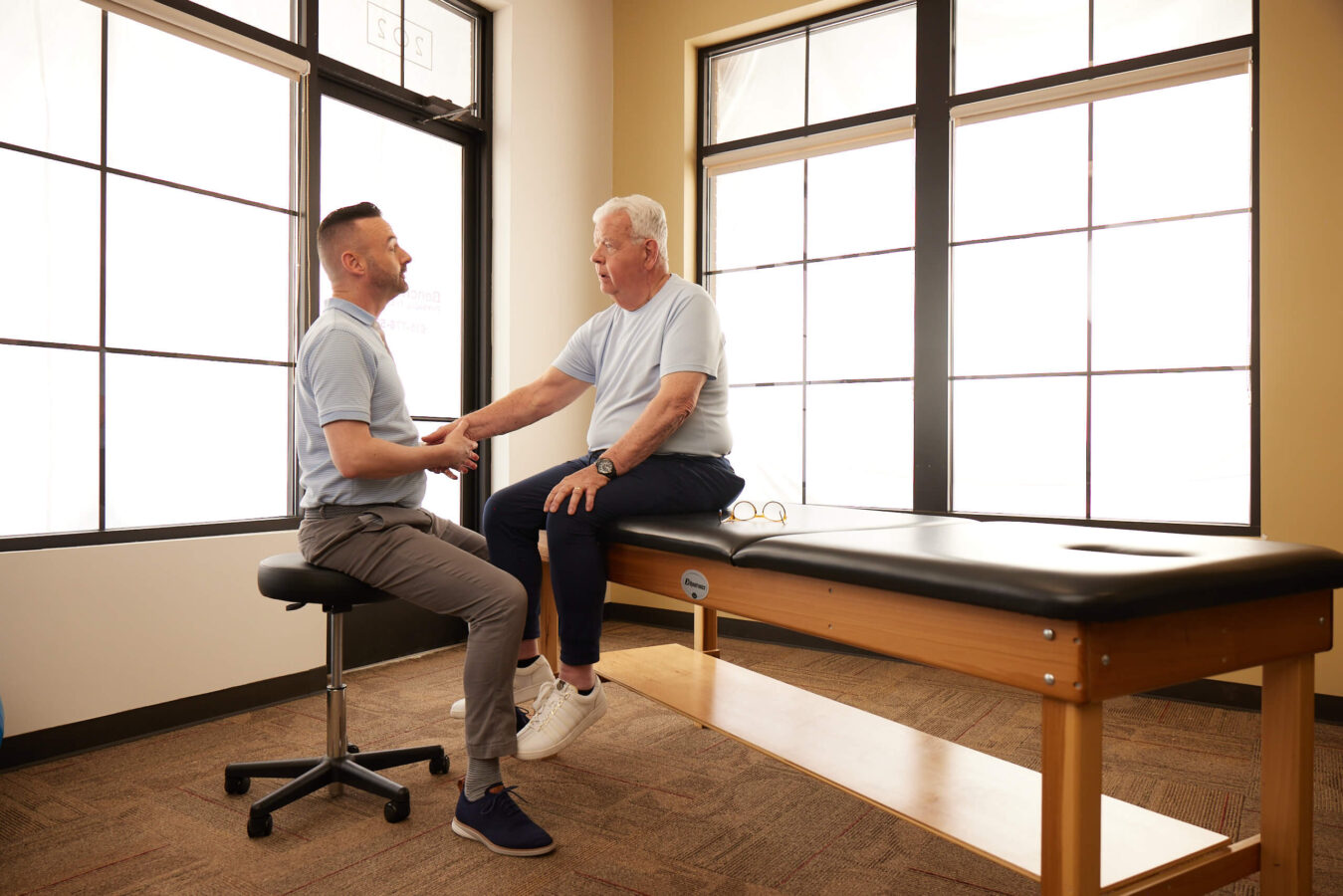
Physical therapy is designed to help patients feel, move, and live better. And a strong connection between the patient and the physical therapist is a key part of that process. They should understand your condition and have experience achieving good outcomes for patients just like you. If your healthcare provider ordered physical therapy, or you are self-referring, we’ll show you how to choose a physical therapist with these five tips.
There’s a reason why physical therapists are considered “movement experts.” The path to becoming a licensed physical therapist is quite rigorous. To receive their state license, every practicing physical therapist must have a valid degree from an accredited physical therapy program, clinical experience, and a passing score on the National Physical Therapy Exam (NPTE).
Because the field of physical therapy is always evolving, look for a physical therapist who continues expanding their knowledge throughout their career. Patients win when they choose a physical therapist who is a “lifelong learner.” Therapists who stay on top of the latest research and developments can share these innovative treatments and techniques with their patients.
At the same time, don’t assume that just because your physical therapist is a recent graduate that they are inexperienced. Physical therapists complete at least a year of clinical experience working directly with patients before they obtain their license.
Some physical therapists discover they have a passion for treating certain conditions or patients of specific ages and stages of life. The American Physical Therapy Association (APTA) American Board of Physical Therapy Specialties (ABPTS) currently offers 10 specialties for therapists seeking a deeper understanding in certain areas of care:
If your needs align with any of these categories, you might consider working with a board-certified physical therapy specialist in that field.
Physical therapy incorporates exercise, stretching, education, and hands-on therapy to diagnose, treat, and manage musculoskeletal injuries and conditions. It’s that holistic approach to wellness and the balance between manual and passive techniques that makes physical therapy so effective.
Manual therapy is the use of skilled hand movements to manipulate and mobilize soft tissues, improve flexibility and range of motion, decrease restriction, reduce swelling and inflammation, and control pain. In fact, your therapist’s hands may just be their most valuable tools.
Manual therapy has been shown to be more effective than passive interventions and the effects are even greater when combined with exercise. If your therapist lets machines do most of the work in the clinic, you may want to look for a therapist who is less dependent on passive therapies.
Yes, homework is a big part of physical therapy. It’s impossible to accomplish everything in a single session. Your physical therapist prescribes targeted stretches, exercises, and other therapies for home to reinforce the work you do in the clinic.
Now, let’s take that school analogy a step further. Think of your physical therapist as a teacher. Not only do they give you homework, but they also educate you on how to take care of your own body. From diet and nutrition to sleep and physical fitness, they educate patients on lifestyle modifications to improve their overall health and wellness and support their therapy goals.
To get the most out of your physical therapy program, you must trust your therapist and feel comfortable working with them. Do they give you their undivided attention? Do they listen and ask questions? Are they receptive if you express a concern or a desire to adjust your treatment?
Of course, training and credentials are important, but research shows a good relationship between therapist and patient can have a positive impact on patient outcomes. If your physical therapist isn’t kind, empathetic, and relatable, you may not get the most out of your experience.
So, now you know how to choose a physical therapist and you’ve scheduled your first physical therapy appointment. Now what? Before you dive into therapy, your physical therapist first evaluates your condition and symptoms. They perform a physical examination of your joints and muscles to determine what’s causing your pain. (Choose loose, breathable, comfortable clothing that that allows your therapist to easily access the injured part of the body.)
Based on your symptoms and your condition, your physical therapist creates a custom treatment plan to decrease your pain and improve mobility and function. It’s normal to review your treatment program often and make changes based on your progress.
Looking for a physical therapist can often be a process of trial and error. If it doesn’t feel like a good fit, share your concerns with your therapist and see how they respond. If it still doesn’t feel right as you move forward, don’t hesitate to schedule a new patient screening at a different clinic. Find a physical therapy clinic near you.

